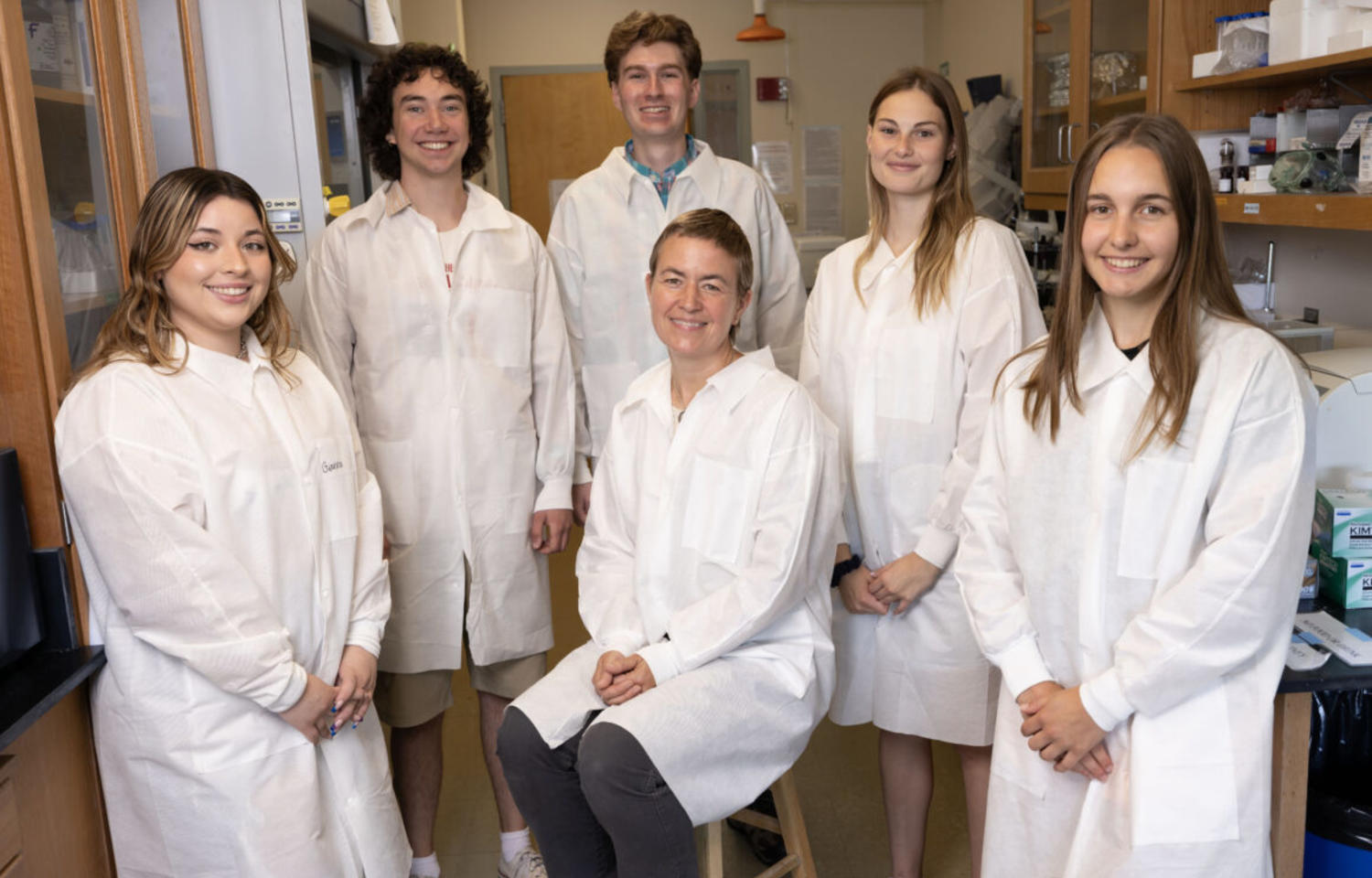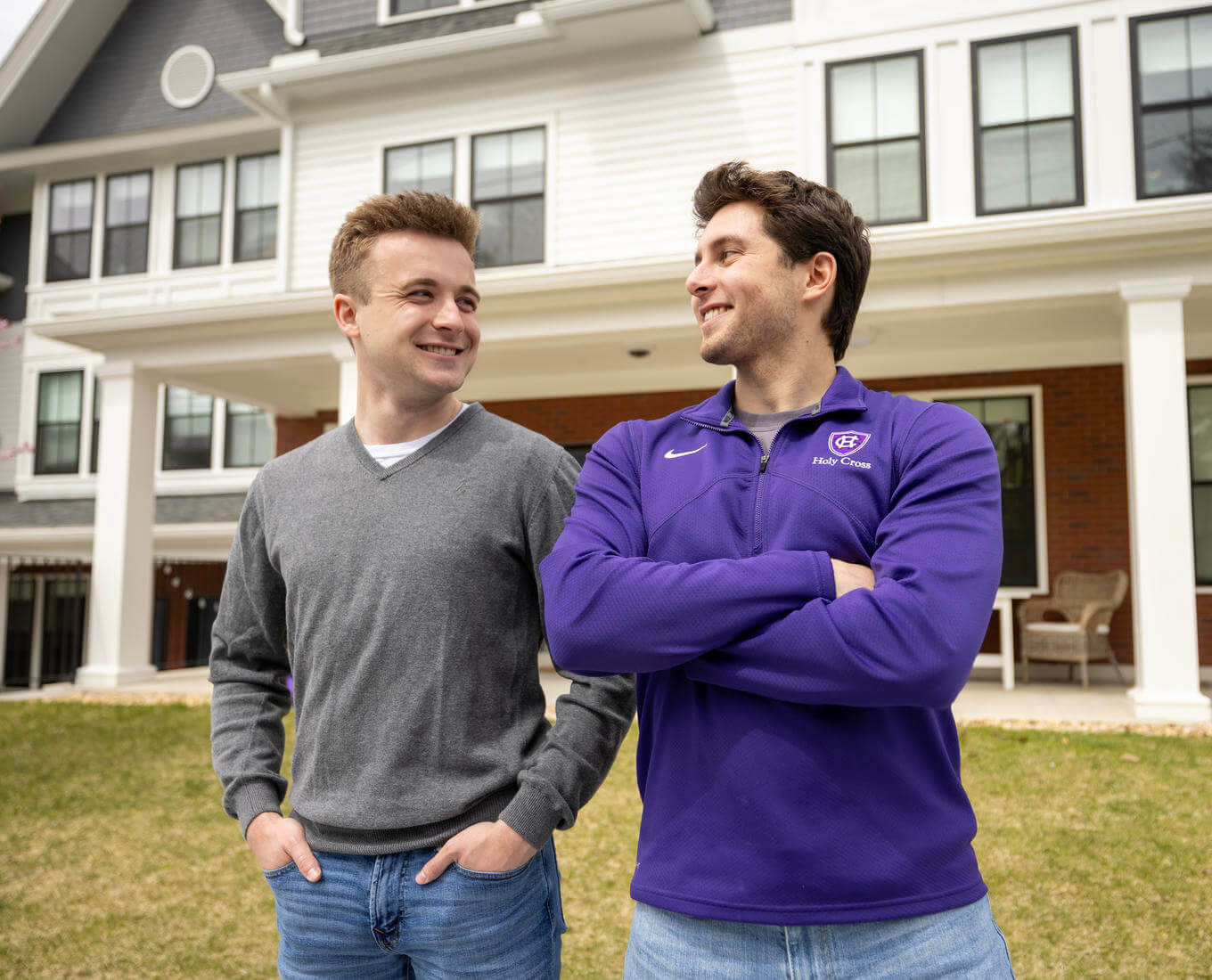Julia Paxson, DVM, associate professor of biology and head of the department, is serious about her research, which strives for a better understanding of how stem cells age and whether age improves or decreases cell efficacy when used for treatment of disease.
Her lab runs like a graduate-level research facility, where she provides guidance, support and, hopefully, some funding. But, unlike many labs, hers is run by undergraduate biology majors.
"It’s a rare opportunity to get this level of experience. It has certainly helped prepare me for my next steps," said Brian Saville ’22, research associate and lab manager who will continue his studies in biology this fall at Fordham University as a master’s candidate.
"It’s such a joy for me to see them go from first-or second-year students to graduating seniors who are sophisticated scientists, as well as leaders and mentors," Paxson said. "Frankly, this has little to do with me. It’s about the student-focused communities they build. I just provide a pathway through guidance and support."
"She trusts us to run the lab," said Gianna McPartland ’25 who, along with Heather Paglia ‘25, have been researching how stem cells age in canines. "Her trust and the experience I’m having has opened me up to the possibility of doing research that will benefit animals and humans. It’s been amazing."
Inside an Undergraduate Student-Run Stem Cell Lab

From experimentation to, ideally, publication, biology majors examine how stem cells age, with hopes to better understand how they could be used to treat disease.
"I love my dog and I love my grandparents. I would love to be part of something that finds a way to improve their lives," Paglia said. "I’m interested in a future application that could reverse aging or pinpoint what is going on in cells that could eventually apply to humans."
The canine lung stem cells with which they work, acquired from Tufts, have lifespan characteristics more similar to humans, according to Paxson, including being exposed to similar environmental situations and achieving similar aging milestones. In her lab, the stem cells, which come from tissue samples from canine lungs, continue to grow, are frozen, and then tested further to see how the cellular functions change as the age of the donor increases.
Understanding Stem Cells
"We need to understand more information on how stem cells age, and consider how to categorize how stem cells function and how they work in our own bodies or a source of therapy," Paxson said.
The work is a continuation of research she began as a veterinarian at the Cummings School of Veterinary Medicine at Tufts University, where she became curious about how stem cell medicine can be used in chronic lung diseases in humans and how they become more prevalent with age. "For many years I think we’ve been sort of cavalier about stem cells and now we’re beginning to understand that we need to pay more attention to the specifics."
Erik Carlson ‘25 and Emily Bubonovich ’25 have spent this summer researching a protocol that examines how stem cell proliferation in small marine worms changes with age.
Using the two different model systems – the canine cells and small marine worms – the students are constructing and executing experiments and documenting their findings. A portion of this work is funded with a $400,000 grant from the National Institutes of Health.
Paxson considers summer research a critical element in student growth because it is a time without outside academic distractions. This gives students breathing room to concentrate on the lab, read papers, discuss findings and bond as lab partners.
